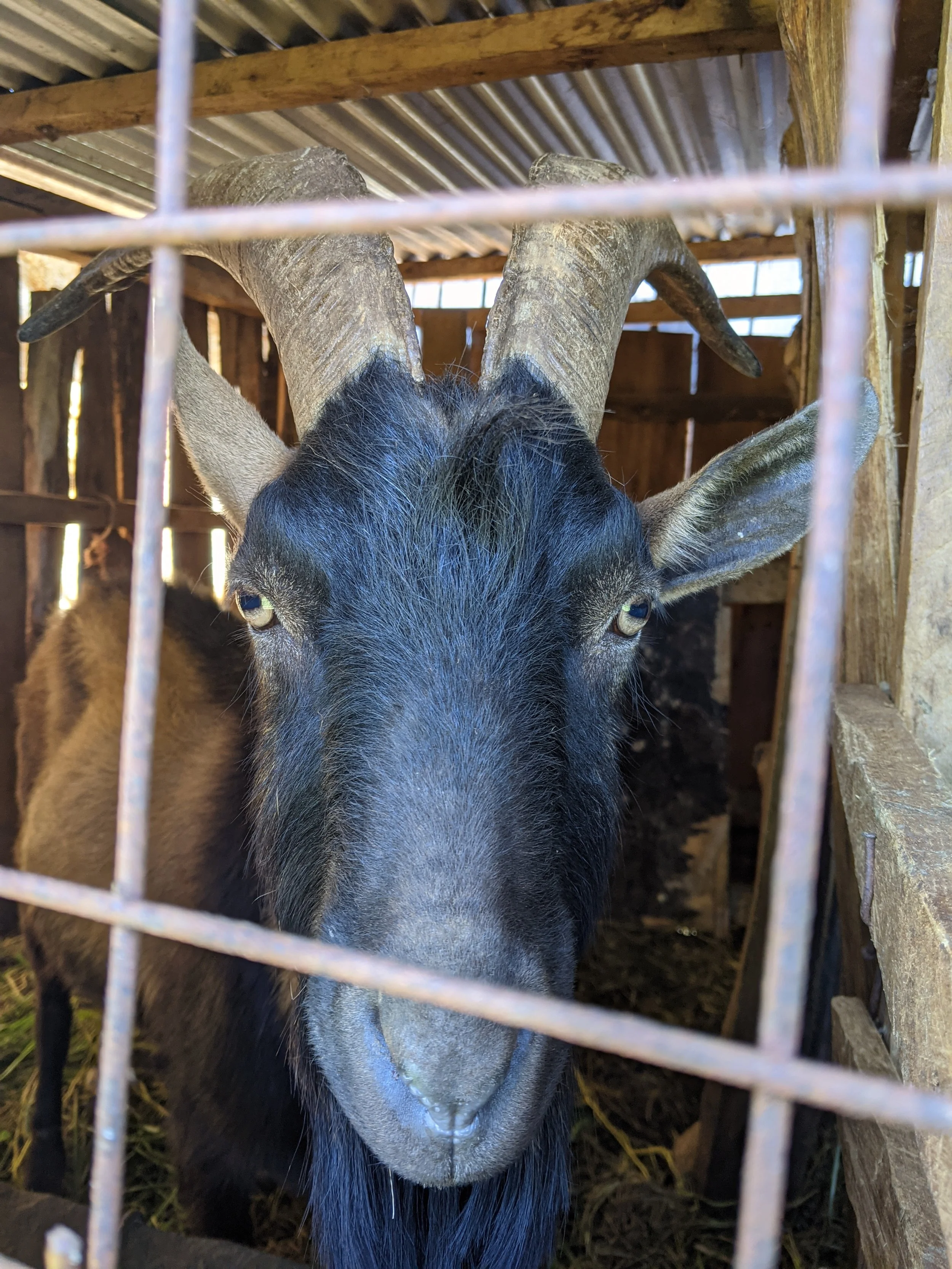making a minute documentary with Kilimo Source in Kenya
By Eoghan McDonaugh, August, 2022.
Over the years we’ve honed our craft, as a collective combining visual storytelling with academic research to produce honest, exciting and often highly immersive results for our clients and partners. Back in 2017 we spent time in Kenya traversing around the country for an international NGO, speaking to digitally connected small-holder farmers, asking them how internet access and social media platforms are impacting their farming practices.
So, in June 2021 when Caribou Digital were looking for partners to help them research ‘Social Agriculture’ in Kenya we really wanted to be involved. As part of the research project in partnership with Mastercard Foundation, Caribou Digital wanted five main outputs which would help them coin and define the terms ‘social agriculture’.
In order to work with Caribou Digital on this project we teamed up with Learn.ink and Catherine Kamanu, a farmer and Facebook farming group owner deeply embedded in the ‘social agriculture’ ecosystem in Kenya. Catherine subsequently set up her own company called Kilimo Source to help the team deliver this project.
This project was set up to take a closer look into one of the many interesting findings from Caribou Digital’s work on platform livelihoods, where as part of a separate research project they found that many people they spoke to in Kenya were entering into agriculture or had recently done so. Part of the reason for this shift is the ever expanding network of agriculturalists engaging in a wide range of practices on social media, mainly in Facebook groups and Whatsapp groups.
The question was, what is ‘social agriculture’ and what can those on the ground in Kenya tell us about it? Below is the definition we are currently using to describe ‘social agriculture’.
Social agriculture refers to a set of practices that support agricultural livelihoods — agricultural information exchange, agricultural support mechanisms and agricultural markets — based on the use of social media platforms in countries with a high proportion of their workforce in agriculture.
How we did it…
Working with Learn.ink and Catherine Kamanu/Kilimo Source we compiled a sample of approximately 150 Kenyan agriculturalists that were active to varying degrees on social media. The initial list was comprised of people from Catherine’s network and some also came through the FB survey which Learn.ink conducted as part of the Ecosystem study.
Every participant that was engaged by the Facebook survey or Kilimo Source received payments for each stage of their participation in the research. Full anonymity was offered as an option and participation in the project was secured through informed consent at every stage - where it was communicated exactly why they had been selected, what was expected from them and how the research was being conducted.
Our aim was to get the list whittled down to 60 farmers, with a slant towards youth, an equal gender balance, and a mix of different farming practices, locations, and roles on social media etc. Once we settled on our sample of 60 farmers, Kilimo Source led by Catherine interviewed all 60 for 20 minutes each.
Once this round of interviews was completed the Habitus team began the task of listening to them to try and build a picture of how people were using social media in agriculture and which 20 farmers would be best placed to carry the conversation forwards with us. Still careful to keep a representative mix of participants, we made a final selection of 20 agriculturalists.
We then interviewed them over Zoom for 60 minutes each - asking about their backgrounds, their upbringing, what the different setups on their farms was, and to what extent social media played a role in their farming lives and practices. From here we transcribed and coded the interviews which helped us identify the key themes coming out of the interviews and the stories and themes for the qualitative report started to take shape.
Then came the tricky task of deciding which individuals we’d like to film in Kenya and why. For this we needed to think carefully about what each person was telling us and how they fitted into the story that was emerging. What had they told us in the interview that we’d like to include in the story. We we’re keen to show the different ways social media was being used to support livelihoods across the value chain.
After over 20 hours of in-depth interviews my head was spinning with wonderful soundbites I knew were going to bring the idea of social agriculture to life. We were given some broad steers from the Mastercard Foundation to include youth voices, make sure that the female farmers were equally represented, newbies included, and a mix of geographies represented. Bearing this in mind we chose ten farmers to film with.
The Filming
As director I was piecing it together during the months leading up to filming. How could we make this story about something analog and fairly static, captivating and engaging? How could we make the film thoughtful and insightful as well as create the feeling to the viewer of being on this bumpy, dusty and exciting road trip with us?.. Not just that, how can we weave the different practices and stories together to create a picture for the viewer of how social media and farming are intersecting in Kenya.
We started to hone in on the different stories we wanted to capture. At this stage of the project our collaborative relationship with Catherine and Kilimo Source started to come into its own. We picked our ten social agriculturalists for the film and then dropped the pins on the map to see where they were all based.
Kilimo Source then began producing the trip for us. Working closely together I drew up a shot-list and story outline. We then started to think about things like; which farmers were geographically close together, how long we’d need with each farmer, what was happening on each farm that day and things like what time of day would be the best for the flow of the film.
There were some scenes I was certain about. I knew that we wanted to do a low light evening shoot with a market stall owner using Whatsapp to run his food delivery business - located at Kagemi market. The sequence was going to be observing him filling online orders that come in through Whatsapp and then sending the package off through the dusty chaotic roads of Nairobi. I wanted to pair this with a young woman who uses her popular instagram page to sell potatoes and onions - which she also has delivered by a rider. Visually we could use the delivery to cover both stories.
We also knew that we wanted to start the documentary off in the morning with one of our farmers called Fred. His routine is to check his socials every morning then head to his farm by motorbike and produce an educational video for his Youtube channel Farm with Fred. Farmers are famed for their early starts so we wanted the film to start with that energy and crisp light.
The documentary
Our base was in Sagana Town in the Kirinyaga District in Central Kenya. The shoot took 9 days and saw us covering hundreds of kilometers and visiting the following counties; Muranga, Kiambu, Laikipia, Nyeri, Nairobi and Kirinyaga. We were accompanied every step of the way by Catherine, our driver assistant Daniel Kamau.
This documentary is an authentic, well-researched look at the social in ‘social agriculture’. We used a blend of action shots using a gopro, expansive transitional shots filmed using a mavic drone to show scale (sparingly), some actuality to inject pace and in-depth interview to deliver an authentic docu-style film.
The aim of this documentary is to engage the viewer in an honest, beautifully shot film which depicts how social media platforms and agriculture are intersecting. The characters and their sequences were linked together with thoughtful storytelling and cinematography. We wanted to use the natural beauty of rural Kenya combined with the bustling urban vistas, marketplaces and the beautiful farms we visited.
The film covers a range of different stories, strategies, practices and business models as well as draws out the ‘social’ aspect which underpins the research project as a whole and is the main theme in the film. We wanted to show how online and offline individuals andcommunity mix, how exchanges happen in this new space but also highlight some of the issues and problematic aspects which people experience on social media such as, issues around trust, problems with payments, harassment, bullying, scams and in some cases unsolicited sexual imagery and attention.
As a result we were able to make a farmer-led, farmer-told story which shows that social media plays host to farmers' individuated strategies and approaches. One of the key findings from the research and making the documentary is that users move between platforms to achieve their goals. We clearly see that more is needed from the social media platforms themselves to ensure that they’re doing all they can to support livelihoods in this context. There were so many stories that we couldn’t cover within the 15 minutes and for those insights the further analysis please have a read of the written report.
We hope that the film is an enthralling and interesting peek into the lives of those who’re using social media to farm in Kenya. We think this project and film would be of great interest to social media platforms, the international development community, tech companies, financial services and local and national government authorities not only in Kenya but other places around the world where these forms of online social exchanges are taking place.
There’s much more to do!
We are excited to be covering a highly dynamic aspect of Kenya Agriculture which extends beyond Kenya and is very likely to have increasing influence in the sector - but we are also aware we have not been looking at farming for subsistence and sale through local markets and middlemen/brokers working outside social media & other community efforts. It would also be great to see how social media is being used in other countries in Africa and beyond!
The challenges: information is not always reliable, scams are common and harassment and abuse are rife. This film concludes with a call to action for platform owners, government and financial institutions as well as international development organisations to make the most of this new phenomena and play their part in creating an inclusive online marketplace where everyone who wishes to participate can thrive.










